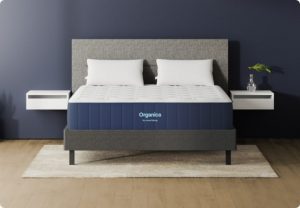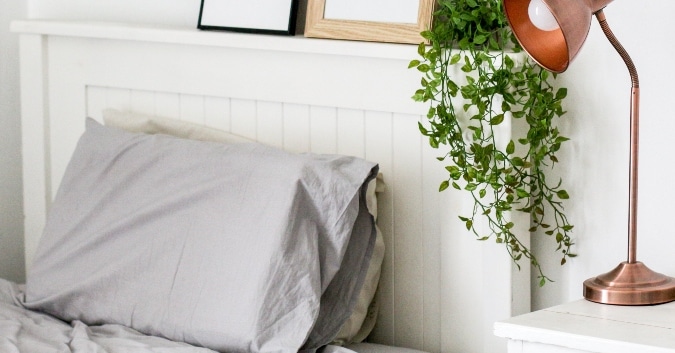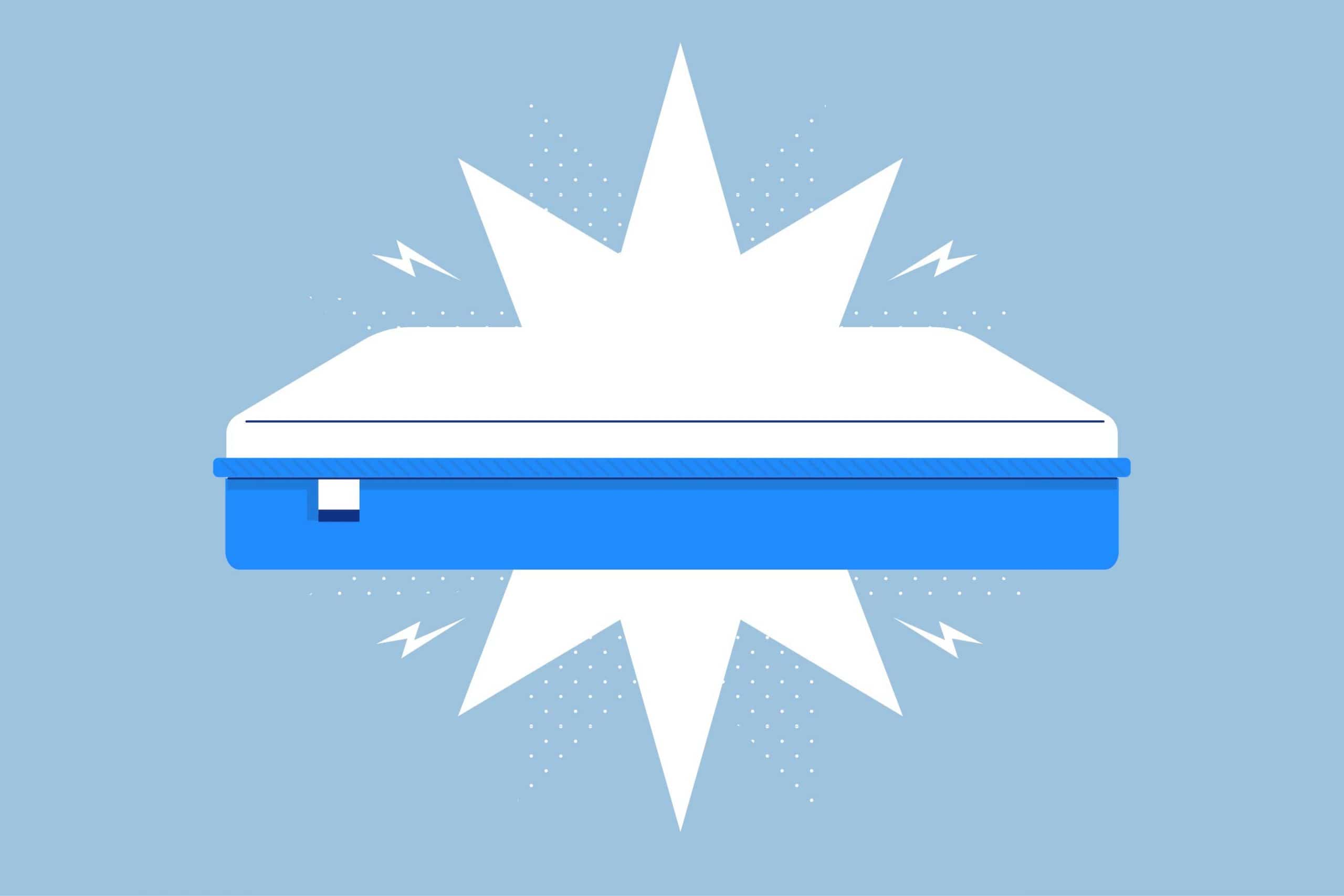If you are currently living with any chronic pain, switching to a more supportive mattress is one of the best ways to find relief. As you shop, you may come across beds labeled as “orthopedic mattresses.”
However, there are currently no regulations in place on the language mattress manufacturers can use. There are also no government standards set to determine what constitutes an orthopedic mattress and what does not. Therefore, it can be challenging to determine if you are genuinely getting a more supportive mattress.
This article outlines what an orthopedic mattress is and how it can help you find the pain relief you need for better sleep.
What Is an Orthopedic Mattress?
Orthopedic mattresses are designed to provide pressure relief to sensitive areas like the hips and shoulders and promote a neutral spinal position. For seniors, athletes, those with chronic pain, and those currently recovering from injury, healthy spinal alignment during sleep can encourage healing, deeper sleep, and less pain.
Orthopedic Mattress Firmness
There are no regulations to determine what can and can’t be deemed an “orthopedic mattress.” However, mattresses most frequently recommended by chiropractors are medium to medium-firm. Ultra-soft and extra firm mattresses are not generally considered “orthopedic” because they are not suitable for a wide range of sleep styles and body types.
Medium mattresses have the most universal comfort and are often recommended for side, back, and combination sleepers and those with an average weight between 130 and 230 pounds. The balance of support and cushioning on a medium bed ensure the joints are cradled and protected from pressure points. However, the slight firmness keeps the hips and shoulders lifted and the spinal neutral.
Medium-firm mattresses are typically recommended for those with back pain and heavy individuals over 230 pounds. These beds have slightly more firmness than a medium bed to reduce excess sinking and spinal misalignment.
Types of Orthopedic Mattresses
Any type of mattress could be labeled as an “orthopedic bed.” However, memory foam, latex foam, and hybrid beds are the most popular for pain relief.
Memory Foam Mattresses
Memory foam mattresses contour closely to the body, ensuring each area is cushioned and supported. Since memory foam is so responsive, it maintains its elasticity and molds to your joints, even as you change positions.
Memory foam beds are often recommended to those with chronic pain because their buoyancy promotes spinal alignment, while the deep contouring prevents pressure points near the joints.
Latex Mattresses
Latex mattresses are similar to memory foam. However, latex has a bit more bounce than memory foam, which is perfect for spinal support. Latex beds are available in soft to firm models, but this material’s elasticity makes it ideal for medium to medium-firm beds.
Hybrids Mattresses
Hybrid beds have a 2 to 3-inch top layer, typically made of memory or latex foam. Beneath the top layer is a base of pocketed coils. Unlike traditional innerspring beds, hybrid coils move separately rather than as a unit. This structure means hybrids have less motion transfer and can contour more closely to the body.
How to Find an Orthopedic Mattress
Pressure Relief
When lying down in bed, the hip and shoulder joints often bear the brunt of your body weight. On a very firm mattress, friction can build-up in these areas and lead to painful pressure points. Therefore, for a bed to be considered “orthopedic,” it should have some give, meaning these sensitive areas should be cushioned.
However, the bed should not be so soft the hips and shoulder sink and force the spine to bow. Orthopedic mattresses balance cushioning and support, so the spine is kept in a neutral position.
Spine Alignment
For a safe, neutral spine, a mattress should evenly distribute body weight. If one part of the body sinks too far into the bed, it can force the spine into awkward positions that cause pressure and tension to build up in the lower back muscles.
On an ultra-soft mattress, the hips and shoulder may sink too much and cause the spine to curve unnaturally. However, if the mattress is too firm, sleepers may not sink enough, leading to sore spots near the joints. Medium to medium-firm beds have minimal sinking, so the spine is less likely to bow and cause the muscles to clench and tighten.
Orthopedic Mattresses at Amerisleep
Our eight Amerisleep mattresses are each designed with a specific sleep position and body type in mind. They range in firmness from ultra-soft to firm. However, our medium and medium-firm beds, the AS3, AS2 Hybrid, and our latex bed, Organica, are frequently recommended for joint pain, lower back pain, and athletes and those in recovery.
No matter which Amerisleep mattress you choose, you will have 100 nights to test it out and make it’s the perfect fit. Each of our beds also comes with a generous 20-year warranty covering structural and manufacturing defects.
AS3

The AS3 is our medium all-foam model with the perfect balance of compression and support. This 12-inch mattress has three advanced layers—a 3-inch Bio-Pur® memory foam layer, a 2-inch zoned support layer, and a 7-inch base layer.
The comfort layer features our unique plant-based memory foam, Bio-Pur®. Instead of traditional manufacturing methods, we construct our Bio-Pur® foam with plant-based oils, making it more breathable, eco-friendly, and responsive than conventional varieties. While this material cushions the joints to prevent pressure points, it won’t trap body heat, so sleepers are less likely to experience uncomfortable night sweats.
To promote a safe, neutral spine, we include a transition layer of our Affinity Foam with HIVE® technology. Hexagonal cutouts across this foam’s surface are more conforming near the joints, so you never wake up with sore, stiff joints. However, along the back and neck, these cutouts are firmer to reduce sinkage and prevent alignment issues. No matter which sleep posture you prefer, this supportive layer cushions the joints and ensures the spine is kept neutral.
The base of the AS3 features our Bio-Core® support foam. This durable layer is resistant to indentations and sagging, ensuring body weight is always evenly distributed, and you are never forced into awkward sleep positions that put pressure on the back muscles.
AS2 Hybrid

Our AS2 Hybrid is a medium-firm mattress with a conforming comfort layer and stable spring coil base. This mattress is ideal for back and stomach sleepers. Since chiropractors frequently recommend medium-firm beds, the AS2 Hybrid bed is also a good choice for those with chronic joint pain.
Although the AS2 Hybrid has a medium-firm feel, the 2-inch Bio-Pur® comfort layer molds to your body to alleviate muscle tension and prevent sore spots near the joints. Since our Bio-Pur® foam doesn’t retain heat and moisture the way most mattress foams do, it is ideal for hot sleepers and those who experience night sweats.
To give the bed a slightly firmer feel, we included a transition layer of our Affinity foam. This material is firm yet flexible and has more buoyancy than the top layer. This foam’s responsiveness ensures sleepers don’t sink too far into the bed and force their spine to bow unnaturally.
The base of the AS2 Hybrid features our pocketed spring coils. These coils are individually wrapped in durable yet lightweight fabric to increase airflow and comfort. This stable base keeps your spine resting in a safe, neutral position while also preventing pressure and tension build-up near the joints.
Organica

The Organica is our latex hybrid mattress, made with natural materials that give it a medium feel. The use of natural Talalay latex foam and the GOTS organic certified cotton makes this bed non-toxic, eco-friendly, and safe for those with severe allergies and other health conditions.
In addition to organic cotton, the Organica has a layer of New Zealand Joma Wool®. This layer increases the breathability of the mattress and acts as a natural fire-safe barrier. This wool layer allows us to avoid using toxic flame retardants in the Organica.
The Talalay latex in the comfort layer of the Organica is certified by the eco-Institut, the Rainforest Alliance, and OEKO-Tex® Standard 100 to be sustainably harvested and free of harmful chemicals and additives. This foam contours similar to our Bio-Pur® foam. However, latex has a natural bounce that keeps sleepers lifted and aligned.
Supporting the comfort layer is a pocketed spring coil base. Since these coils move independently of each other, they contour more effectively than traditional innerspring coils. This base also has better edge support and less motion transfer than a standard spring mattress.
Frequently Asked Questions
What mattress do chiropractors recommend?
Most chiropractors recommend medium-firm mattresses. Softer mattresses may cause sleepers to sink and force their spine out of alignment, while firmer beds may cause pressure points for side sleepers. Medium to medium-firm beds offer a balance of support and cushioning and are often best for chronic pain patients.
Some mattresses may come with certifications and approvals from the American Chiropractic Association (ACA) and other medical organizations.
Should side sleepers have a firm or soft mattress?
Generally, mattresses for side sleepers should be soft to medium. Sleepers of average weight (between 130 and 230 pounds) often prefer medium beds to prevent sinking. Lightweight individuals (those 130 pounds or less) often need a soft to medium-soft bed to reduce pressure on the hips and shoulder joints.
What mattress firmness is best for back pain?
The best mattresses for back pain are often medium-firm. While these beds provide some contouring, they are firm enough to support the lumbar spine and prevent spinal misalignment.
The best mattress type for back pain is typically memory foam, latex foam, or hybrid mattresses. These beds are flexible enough to cushion and support the body without causing pressure points.
What is the difference between an orthopedic mattress and a regular mattress?
There is no difference between an orthopedic mattress and a regular mattress. In most cases, the term “orthopedic” describes a mattress that provides a balance of comfort and support. These beds often have a medium to medium-firm feel. They are typically recommended to those with chronic pain or those in recovery.
In some cases, beds labeled as “orthopedic” may come with recommendations from medical experts and organizations. However, no standards or guidelines are set to determine what is and what is not an “orthopedic” bed.
How long does an orthopedic mattress last?
Most mattress types last between 6 and 8 years. Memory foam and hybrid orthopedic mattresses last around 8 years. Latex mattresses typically last a little longer, usually between 10 and 12 years. Traditional innerspring beds tend to have the shortest lifespan—about 6 years.
Conclusion
When it comes to getting a good night’s sleep, it is vital that you feel supported and comfortable on your mattress. When the body is cushioned and aligned, the muscles can relax and recover.
Although mattresses labeled as “orthopedic” work well for many different sleepers, it is best to consider your personal preferences when selecting a mattress. Terms such as “orthopedic” are often used as sales tactics to make a bed appear more comfortable.
Also, the “orthopedic” label doesn’t mean it will be suitable for all sleepers. Your body weight and preferred sleep position will ultimately determine the right mattress for you.
About the author
April Mayer has a degree in exercise physiology and is a firm believer in the power of a good night’s sleep. April’s passion lies in helping others lead more productive lives by helping them get sound, restful sleep every night. April primarily writes about foods and vitamins for better sleep and has written several “better sleep guides” covering a wide variety of topics in her time with Early Bird.
View all posts





